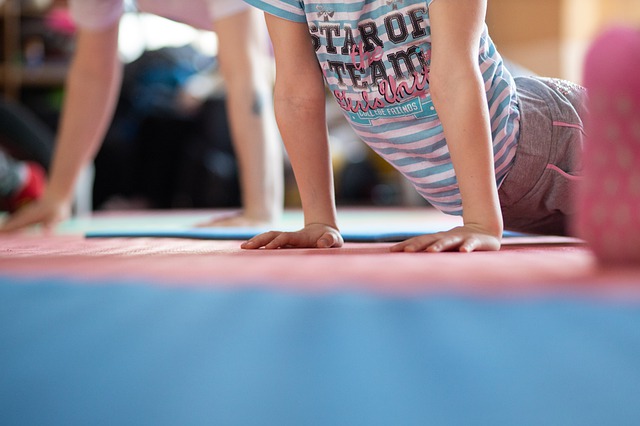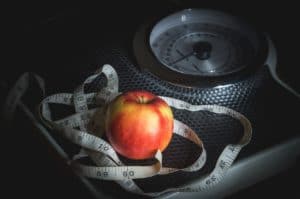Growing up you hear a lot of myths around weight training, especially when it comes to kid’s weight lifting.
With so much misinformation out there, what should you actually believe?
Well, I am here to show you that kid’s weight lifting and strength training does NOT stunt a kid’s growth and is absolutely safe.
This is from my real-life experience of coaching kids through weight training programs and a study that was done!
For this reason, I thought it is time to put the myth of weight training stunts kid’s growth to rest once and for all!
Study Revealing Weight Lifting is Safe and Does Not Stunt Growth
Before I talk about my real-life experience training kids and seeing them grow, let’s see what an evidence-based study has to say about all the noise about weight lifting stunting kid’s growth and being harmful.
A study done by Malina, RM found that kids saw significant improvements in strength during childhood and early adolescence when following a strength program.
However, strength gains were lost when the kids stopped training.
Therefore, it is important that kids stick to a proper training program once they start training.
Also, the study found that weight training programs did NOT influence height and weight in pre and early adolescent youth!
You can check the study out by clicking here.
This is why it is important to look at facts and not what people fear.
The idea that weight training or lifting something heavy can cause you to not grow is a lazy take.
If that were true then no kids backpack should be heavy, nor should they lift anything heavy around the household when you need help.
With this knowledge, just because they are lifting weights, it does not mean that something magically is going to happen to their height in a negative way.
Weight is weight whether it comes from plates, kettlebells, backpacks, groceries or any other form.
Debunking the Myth That Weight Lifting Can Stunt a Kids Growth (Real Life Subject)
When I trained clients at the gym I use to own, we always measured kids heights. The reason we did that was that we wanted to show that this fear, wherever it came from, had no reality.
As you can see in the picture above I measured Opi’s height against the wall. We typically checked his height every 3-4 months.
What did the end result show?
His height when he first started? 5’5
Now?
He is now 6 feet tall!
Not only did he surpass his height, but he did so significantly.
Benefits of Strength Training For Kids
Below are some of the benefits of weight lifting for kids:
- Makes bones stronger
- Learn how to perform multi-joint movements
- Improve motor control
- Build a Mind-Body connection
- Increase in Energy
- Improved Focus
- Increase in confidence
How to Weight Lift Properly For Kids
When I began personal training kids, I really do not know what to expect. Questions arise, how are they going to move? How long is it going to take for them to pick up movements such as squats, lunges, step-ups, etc?
What I learned is each kid is very unique and when it comes to kid’s weight lifting.
But, one thing is universal when it comes to all kids: you have to start with bodyweight exercises and you absolutely cannot rush that process and try to get them on weights on fast as possible.
Some kids have better movement patterns than others, while some take longer to pick up the exercises.
One thing that I really noticed was that girls tend to move significantly better than boys at a younger age.
This in part could be due to girls being biologically ahead than boys by 2 years.
Girls do tend to mature quicker for the most part than boys and that is a factor
Nonetheless, once they learn how to move bodyweight properly and you begin slowly adding load it becomes easy for them to do movements with weight.
If you take care of the form early, you won’t have problems later on.
This is why it is important to master movement first and worry about weight later!
What’s Better Machines or Free Weights for Kids?
This is a legitimate question because from training the kids I did with bodyweight and free weight, it transfers better over to sport and things of that nature due to them learning how to get stronger through motions that they would perform in sport.
However, this is not to diminish machines at all. With machines you can teach them how to go through a motion smoothly and better control movement patters because machines take you through a movement.
But, in terms of developing functional free weight/bodyweight patterns and working on balance and stability, it is best done with your own body and free weights.
What Would Stop a Kid from Lifting Weights?
Maturity. If the kids do not listen and take instructions then it won’t work out. Because weight training requires proper attention and attentive listening, children who do not take instructions well can be at risk for injury.
For this reason, a coach/trainer can refuse to train a kid because they are not ready simply from a maturity aspect.
What Is The Best Age for Kids To Start Weight Lifting Then?
The youngest client I have trained is 8 years old but she was quite mature for her age. So Kid’s can start as early as 8 years old, as long as they take instruction very well.
What did that program look like?
Learning the basic movements at first was the number one priority.
With that being a priority, she learned how to squat, lunge, hip hinge, plank, trx row, step-ups and so on.
It was all bodyweight at first and then as the weeks went along and her form without weight got real sharp, we started adding load to her movements.
Sample Strength Training Program For Kids
Let’s say for example that you will have kids coming in for weight lifting training 2 times a week.
Let’s go over how a sample training program would like in the first two weeks for a complete beginner.
Week 1
Day 1:
- Hip Bridging: 2 sets of 10 reps
- Step-Ups: 3 sets of 8 reps
- Bird Dog: 3 sets of 8 reps
- Lunges 3 sets of 6 reps
- Farmers Carries: 3 sets of 2 rounds
- Squat (Test Form and really work on it)
- Plank: 2 sets of 45-60 seconds
- Side Bridge: 2 sets 20-30 second holds
Day 2:
- Clam Shells: 2 sets of 8 reps
- Side Bridge: 2×30 second holds
- Bird Dog: 3 sets 8 reps
- Squats: Slowly perform the exercise and work on form
- TRX Rows: 3 sets of 8 reps
- Wall Sit: 2 sets of 30-second holds
- Dead Bug: 2×30 seconds
Week 2
Day 1:
- Hip Bridging: 3 sets of 10 reps
- Step-Ups: 3 sets of 10 reps
- Bird Dog: 3 sets of 8 reps
- Lunges 3 sets of 8 reps
- Farmers Carries: 3 sets of 2 rounds
- Squat (Test Form and really work on it)
- Plank: 2 sets of 45-60 seconds
- Side Bridge: 2 sets 20-30 second holds
Day 2:
- Clam Shells: 2 sets of 10 reps
- Side Bridge: 2×30 second holds
- Bird Dog: 3 sets 8 reps
- Squats: Continue to work on form and monitor sharpness of movement
- Hip Hinge: Test and see how the form is and make adjustments accordingly
- TRX Rows: 3 sets of 10 reps
- Dead Bug: 2×30 seconds
*The Main Goal when it comes to the training program here for the first two weeks is to do basic movement patterns so the kid can begin to get stronger in simple movements. Once these movements get stronger and stronger you can begin adding a little bit of weight to them or increase sets or reps. It truly depends on how well the kid move though!*
Last Words
All in all, when it comes to kid’s weight lifting, it does not stunt their growth nor is it dangerous.
However, patience is required when it comes to coaching/teaching kids how to do the exercises properly.
The movement patterns won’t be perfect all the time and that is okay. We should not demand they be perfect either.
As long as the kids are improving over time and are having fun doing it, that is all that matters.
Lastly, creating an environment of learning and not dogging on mistakes is important because the kids will develop a growth mindset and enjoy learning new things!

Personal Trainer
Support my work and articles by clicking the link paypal.me/coachpb23



